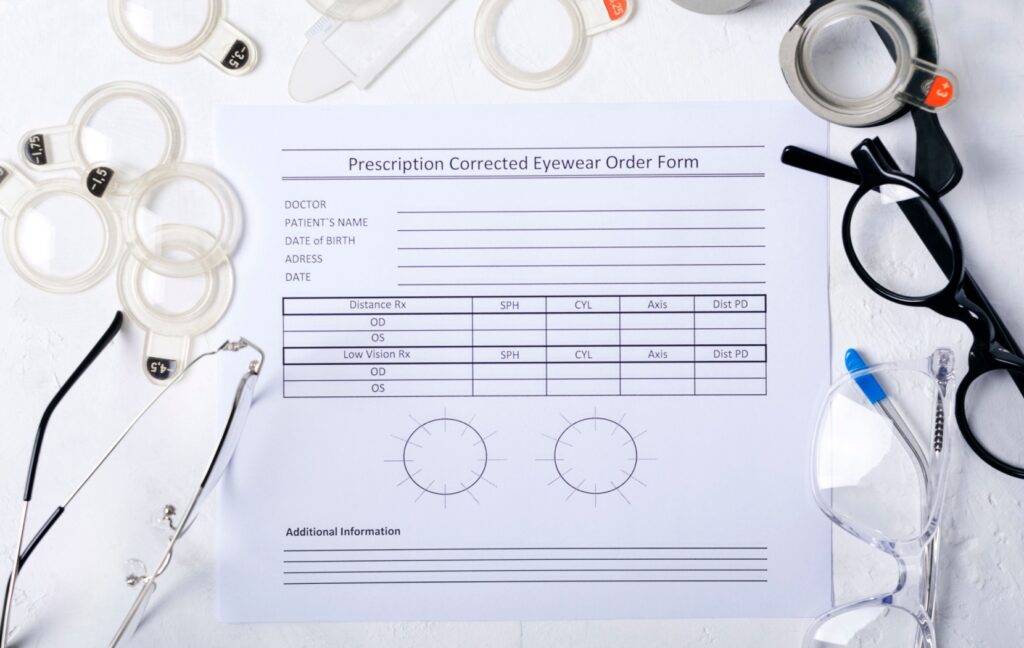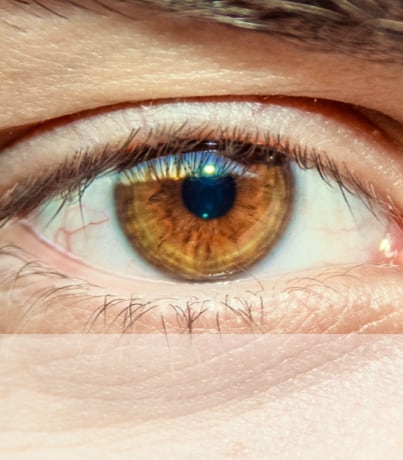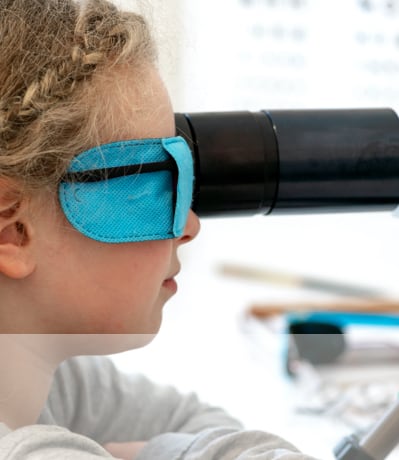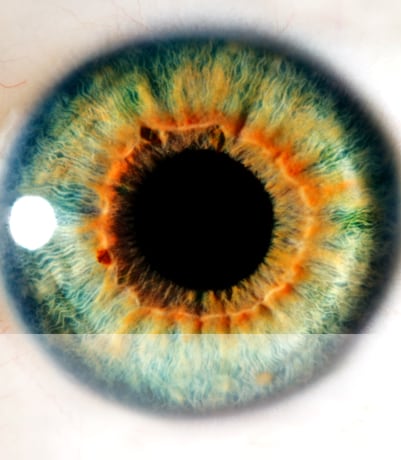Ever looked at your eyeglass prescription after an eye exam and wondered what all those terms and numbers mean? One common term that often raises questions is “Plano.” If you’ve seen “Plano” or “PL” you may wonder what it means for your prescription.
Plano means that one or both of the lenses in your glasses will be flat and won’t change how light enters your eyes. Plano lenses are used where only one eye needs correction, or when someone is wearing glasses for eye protection.
Common Terms on a Glasses Prescription
Before we define plano, it’s helpful to grasp the basic terms typically found on an eyeglass prescription. Here’s a quick guide:
- OD (Oculus Dexter): Refers to the right eye.
- OS (Oculus Sinister): Refers to the left eye.
- OU (Oculus Uterque): Refers to both eyes.
- SPH (Sphere): This indicates the lens power needed to correct nearsightedness or farsightedness. A negative value (-) signifies nearsightedness, while a positive value (+) represents farsightedness.
- CYL (Cylinder): Corrects astigmatism, which is caused by an irregular curvature of the eye’s lens or cornea.
- Axis: Measured in degrees from 1 to 180, this defines the orientation of astigmatism correction in the lens.
- ADD: Stands for “Addition,” representing the extra magnifying power needed for tasks like reading or wearing bifocal lenses.
- PD (Pupillary Distance): This measures the distance between the centers of your pupils, ensuring optimal lens alignment.
- Prism: Used to address double vision by aligning the images seen by each eye.
Now, let’s take a closer look at what “Plano” means and why it might appear on your prescription.
What Does Plano Mean?
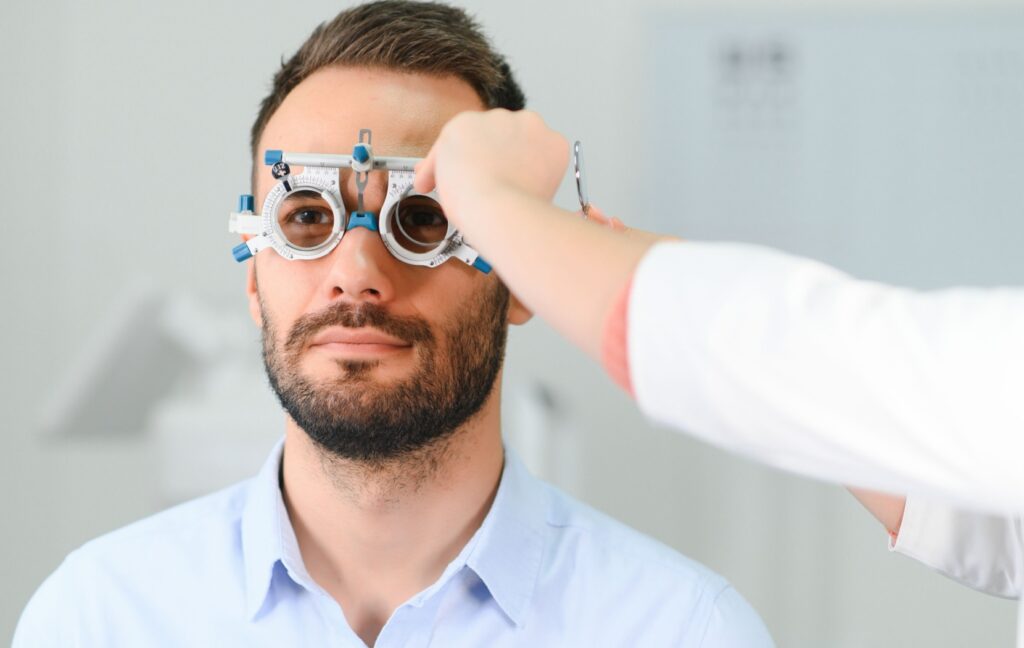
If you notice the term “plano” or the abbreviation “PL” listed in the sphere (SPH) column of your eyeglass prescription, it simply indicates that no refractive correction is needed for that eye. A “plano” value (or zero) means you have neither nearsightedness (myopia) nor farsightedness (hyperopia) in that eye. Your vision for the eye in question is normal.
“Plano” is derived from the Latin word for “flat,” and is used to indicate that the lens in question has no curvature or refractive power. While plano lenses won’t adjust your vision, they still serve many purposes, including eye protection, reducing screen exposure to blue light, or as part of stylish frames.
For example, some people combine the use of a plano lens in one eye with a corrective lens in the other eyes of a single pair of glasses. Even though one eye doesn’t require prescription correction, having two lenses balances out the look and feel of the glasses.
What Is Anisometropia?
A plano marking often appears in cases of anisometropia, a condition where the prescription for one eye differs significantly from the other. For example, one eye might need correction for either myopia or hyperopia, while the other eye requires no correction. It’s common for the eye without corrective needs to be prescribed a Plano lens.
Plano vs. Cylindrical Lenses
Unlike Plano lenses, cylindrical lenses are used specifically to correct astigmatism. Astigmatism occurs when the cornea or lens has an irregular shape, resulting in blurry or distorted vision.
Plano lenses account for eyes that require no refractive correction, while cylindrical lenses adjust for astigmatism. If your prescription includes both Plano and cylindrical lenses, it means that, while the eye doesn’t require correction for nearsightedness or farsightedness, it still needs help to correct astigmatism for sharp, clear vision.
What Is Astigmatism?
Astigmatism is a refractive error that occurs when the eye is shaped more like a football than a basketball. This irregular curvature prevents light from focusing properly on the retina, causing blurred or stretched images at all distances. Astigmatism can coexist with myopia or hyperopia and is primarily corrected using eyeglasses, contact lenses, or refractive surgery.
If you’ve been diagnosed with astigmatism, the inclusion of cylindrical lenses in your prescription will help you achieve clearer vision.
Why Understanding Your Prescription Matters
Taking the time to understand your eyeglass prescription empowers you to make confident, informed choices about your eye care. Whether you’re exploring options for corrective lenses, seeking protection with Plano lenses, or addressing specific conditions like astigmatism, having this knowledge ensures your eyewear consistently meets your needs.
Enhance Your Eye Health with Bettner Vision
Your glasses prescription isn’t a one-time solution. Over time, your vision can change, and what once worked well might no longer be optimal. That’s why regular eye exams are essential for staying on top of your eye health.At Bettner Vision, our professional staff is here to help you find the best prescription for your vision needs and the perfect eyeglasses for everyday comfort and style.
Book an appointment with us today to get started on caring for your vision health.

